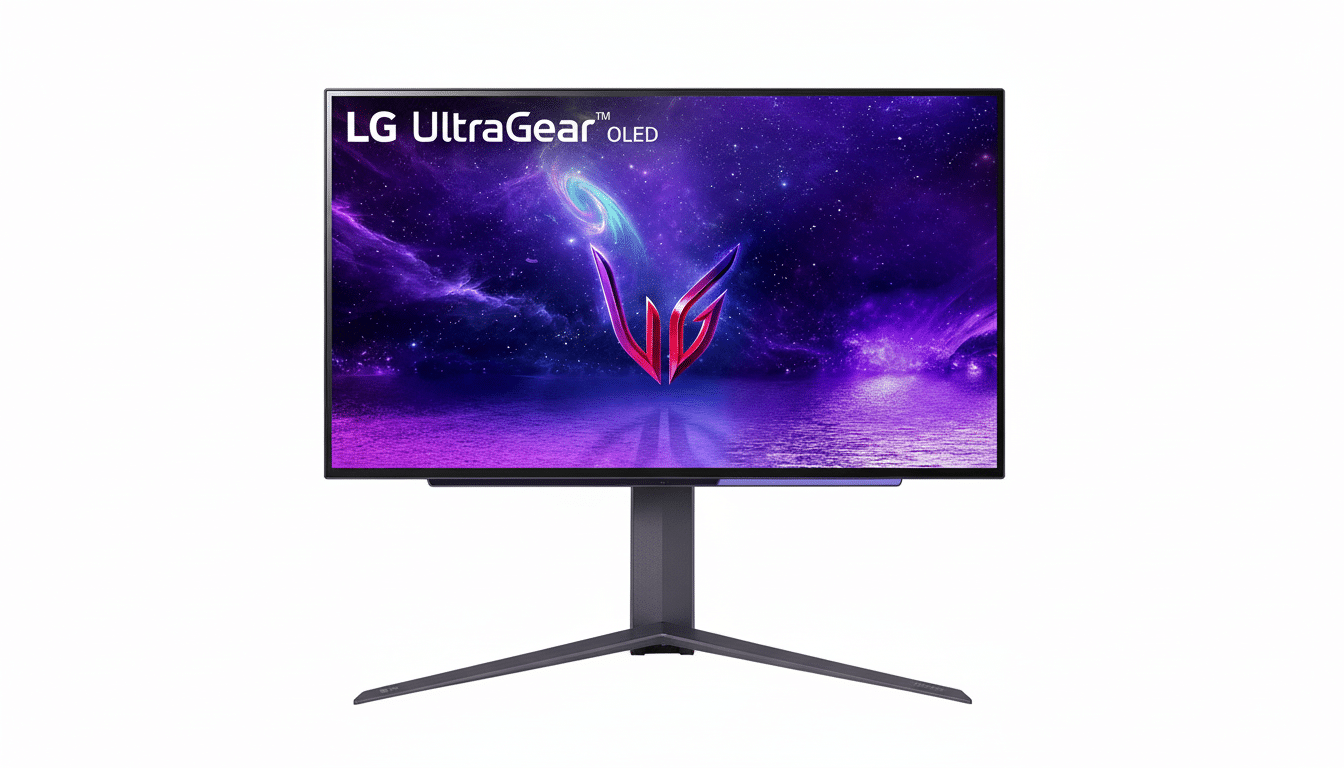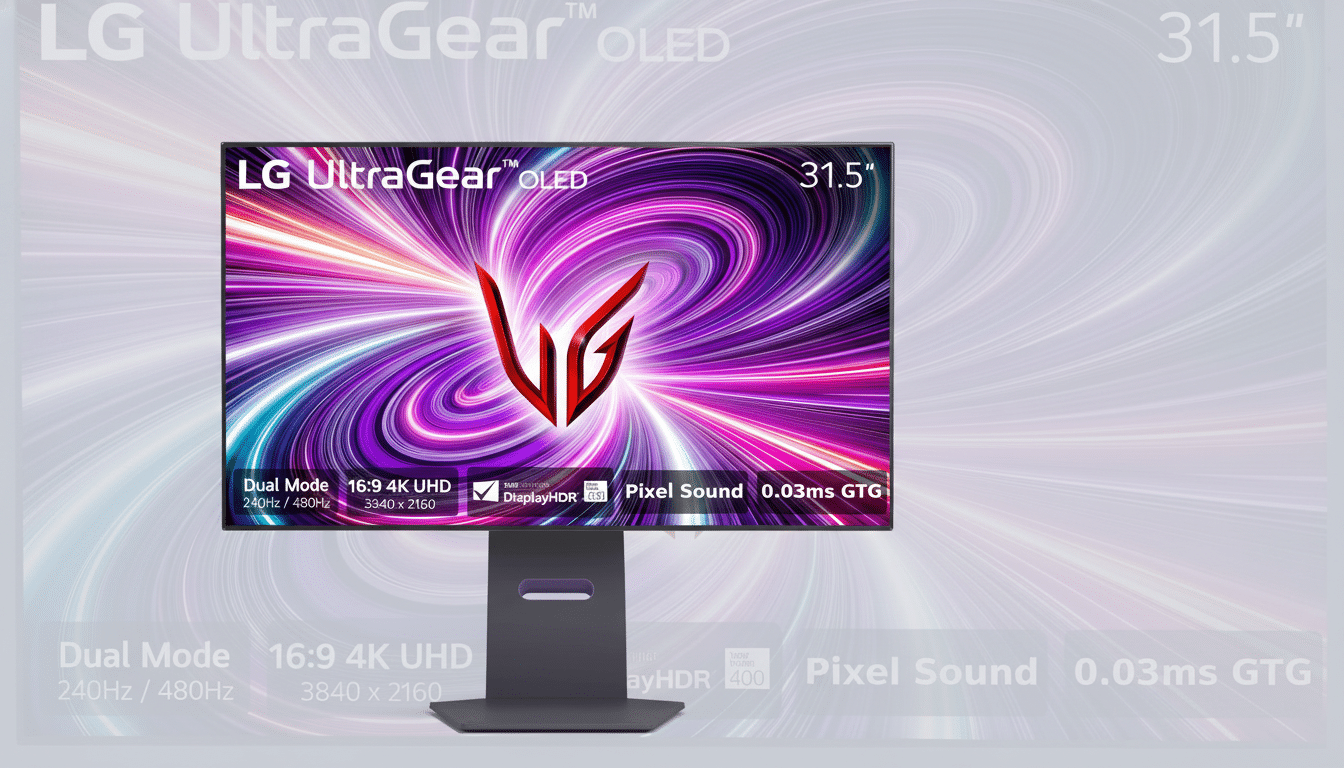Amazon has one of the biggest gaming display sales in recent memory: it’s taking close to 50 % off its well‑calibrated (at least our review sample was) 34‑inch LG UltraGear OLED ultrawide. The drop brings this high‑end monitor down to around the $700 level, a price point that is hard to find for 240 Hz OLEDs meant equally for competitive play and creative work.
OLED ultrawides usually charge four‑figure list prices, and this model’s street price has often flirted with doubling today’s deal. If you’ve been casting a side‑eye at upgrading from a plain old IPS panel (many of us never had the option for something fancier), this is the kind of swing that shifts the meaning of the value equation, particularly for gamers who are chasing high frame rates without losing color fidelity and contrast.

Why This LG UltraGear OLED Monitor Deal Stands Out
Ultrawide OLEDs are at the topmost echelon of the monitor market for very good reason: they solve two difficult problems simultaneously, motion clarity and picture quality. Although fast IPS panels can reach 240 Hz, they cannot compare to OLED’s pixel‑level lighting control. That’s nearly instant pixel response, effectively infinite contrast, and great HDR highlights in one package — a set of attributes that usually cost a whole lot more.
34‑inch comparables, from gaming‑first brands you probably use (or have something in your house with the logo), tend to generally list between $1,000 and $1,300. It’s rare to see LG’s performance‑oriented UltraGear OLED fall this low outside of a major sale, and it undercuts many mini‑LED options that still struggle to produce true black levels in dark scenes.
The Key Specs Designed for Speed and Clarity
The 34‑inch LG UltraGear OLED provides a 21:9 resolution of 3440×1440 at 240 Hz, and its manufacturer‑rated response time is 0.03 ms (GtG). It features both AMD FreeSync Premium Pro and NVIDIA G‑SYNC Compatible variable refresh‑rate technologies to minimize tearing and stutter during frantic firefights or quick camera pans. You also receive HDMI and DisplayPort inputs for easy switching between your gaming PC and console, as well as a matte anti‑glare coating and a low‑blue‑light mode to help reduce eye strain.
For creators, OLED’s per‑pixel lighting provides accurate shadow detail and solid color volume to ensure grading, compositing, and 3D lighting work feels more trustworthy on screen. Manufacturer‑specified differences between model years vary, but last year’s LG gaming OLEDs covered a wide color gamut (such as DCI‑P3) and HDR10, features that help content look more like its higher‑grade equivalent. Independent testing labs such as RTINGS have consistently trumpeted OLED’s unbeatable black levels and blur‑free motion as ideal qualities for watching both media and games.
On the gaming front, the ultrawide excels in games that can take advantage of the extra peripheral vision — think Apex Legends, F1 24, Forza Horizon, and Diablo IV. If you’re pushing 240 Hz at 3440×1440 in fast shooters, combine the monitor with modern frame generation or upscaling — DLSS/FSR — and a high‑end GPU (say, an NVIDIA GeForce RTX 4070 or AMD Radeon RX 7800 XT and up) to help ensure high refresh rates can be maintained in tough scenes.

OLED Advantages and Important Things to Understand
Key among OLED’s signature strengths are its perfect blacks and pixel‑level response time, which, when combined, translate to inky blacks at nighttime and crisp motion without the smear of overshoot or ghosting. There are trade‑offs to consider: full‑screen maximum brightness is lower than the brightest mini‑LED (though not by too much), and OLED still demands you use a modicum of caution if you want to minimize burn‑in over extremely long periods of static UI.
Newer gaming OLEDs have protections in place such as pixel shifting and logo luminance reduction. Long‑term panel testing from outlets like RTINGS suggests that a balance including varied content, using a screen saver, and employing the built‑in guards prevents problems in real‑world use. Keep HUD elements in motion where you can; don’t run static desktop brightness, and run monitor maintenance when the screen prompts you to do so.
Compatibility Considerations and Practical Buying Advice
On PC, consider using DisplayPort to get maximum refresh rates and resolution with DSC on modern GPUs. Console players will appreciate VRR compatibility and 120 Hz modes, but consoles currently aren’t rendering games at 21:9 — you can look forward to pillarboxing or letterboxing on many titles. If you spend time across platforms, the LG’s easy input‑switching makes it seamless to bounce between them.
Like with any hot‑ticket sale, stock tends to move fast and prices can vary. If you’ve ever felt priced out of OLED before, this is the type of near‑half‑off window that does not last long. It’s a better value than several high‑end IPS and mini‑LED options while also offering the motion and contrast advantages try‑hard gamers or visual purists might actually feel in moment‑to‑moment play.
Bottom Line: Why This OLED Ultrawide Deal Matters
The 34‑inch LG UltraGear OLED, at almost half off, hits a kind of sweet spot around elite gaming performance and creator‑grade visuals. If you’re looking for 240 Hz liquid smoothness, true blacks, and ultrawide immersion without the usual premium tariff, then this is the deal to beat.

